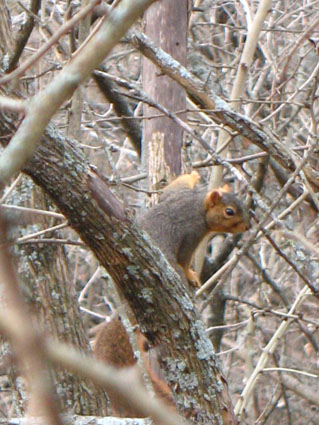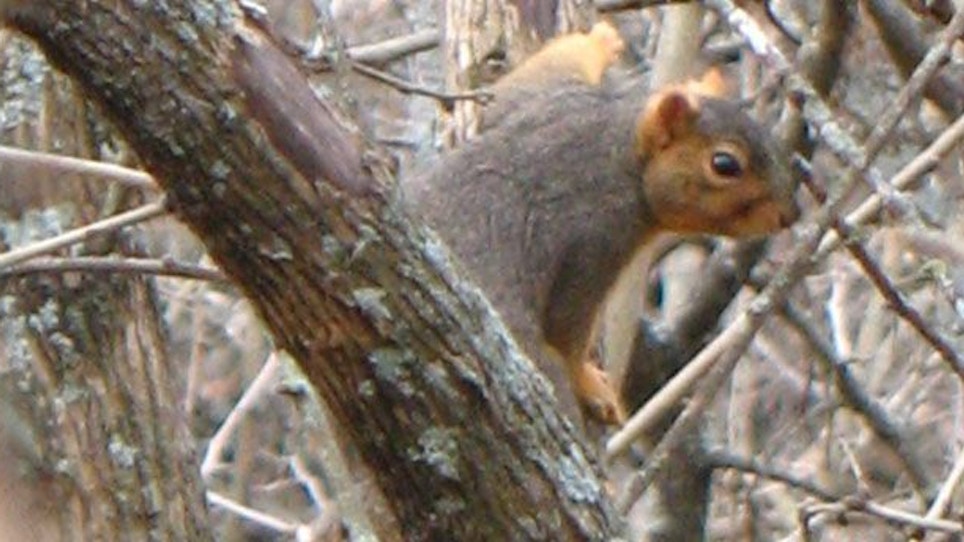 Squirrels can be a nuisance—or an opportunity to hone bowhunting skills. |
For those of us who started shooting bows before compounds really took hold, small game was the way to hone bowhunting and shooting skills before graduating to big game. The lessons learned while pursuing rabbits, squirrels, woodchucks and frogs and other small game make you a better bowhunter overall. And, better yet, small game seasons are often open when big-game seasons are not.
Pick Your Target, Check Regulations
Bowhunting small game couldn’t be easier. Decide on a target species, check regulations, and just do it. Whether still-hunting woodlot squirrels, spot-and-stalking shaded-up jackrabbit or farm-pond bullfrogs, or setting a pop-up blind near a “trophy” woodchuck burrow, these special small-game tips will help you cleanly dispatch targets, minimize arrow loss or damage, and make your hunting more productive.
Choose Tough, Deadly Blunts
In grass, weedy areas or deep leaves, choose points combining blunt tips with grabbing spring-wire arms, or cutting hooks, ripping hooks, or stars to pop arrows above swallowing cover on impact. They also do a quick job on most small game.
Solid steel blunts include models with rear cutting flanges, others with dished faces and sharp corners. They stand up better in rocky terrain or otherwise abusive terrain. They also resist sticking in trees during squirrel shooting or slipping under grass in vegetated areas. They are absolutely deadly on larger small game and birds. One steel-blunt option includes a broadhead bleeder blade that is pressure fit into a slot at its nose. This combination induces both shock and hemorrhage, deadly enough for game up to coyote-size when sharp.
Rubber blunts have been long-time favorites that really knock small game for a loop. They are especially useful in rocky areas or for shooting squirrels from tree tops when an arrow that sticks in a high limb could mean a lost arrow or a dangerous climb for retrieval. They can save an arrow from breaking following hard impact with rock or tree trunk by absorbing excess shock.
Set Sights On Flying Targets, Too
Hitting winging targets appears beyond the scope of the average mortal. With practice it is really easier than it looks. Get a flu-flu arrow for easy arrow recovery but also for safety’s sake. A flu-flu holds four or six high-profile feathers and flies at full speed out to 25 to 40 yards, then quickly sheds velocity to parachute to the ground no more than 200 yards away.
To connect, a wide-sweeping head is in order. One classic option includes snaring wire loops arranged in a cloverleaf configuration. The wire loops snag wings or heads of flying birds, giving you a wider margin of error. More recently available are turkey “head lopper” broadheads that deliver a deadly payload in standard broadhead weights. These include wide, razor-sharp cutting edges held 90 degrees to the arrow that reach out to lop off wings and heads more efficiently than wire. They prove more deadly on glancing body blows. When bowhunting smaller birds it’s best to have a retriever along, as wounding is inevitable, and a good dog assures every bird’s recovery.
What are you waiting for? Bowhunting small game is a riot, keeps you sharp during the off season, and bolsters confidence during long-awaited big-game seasons.






